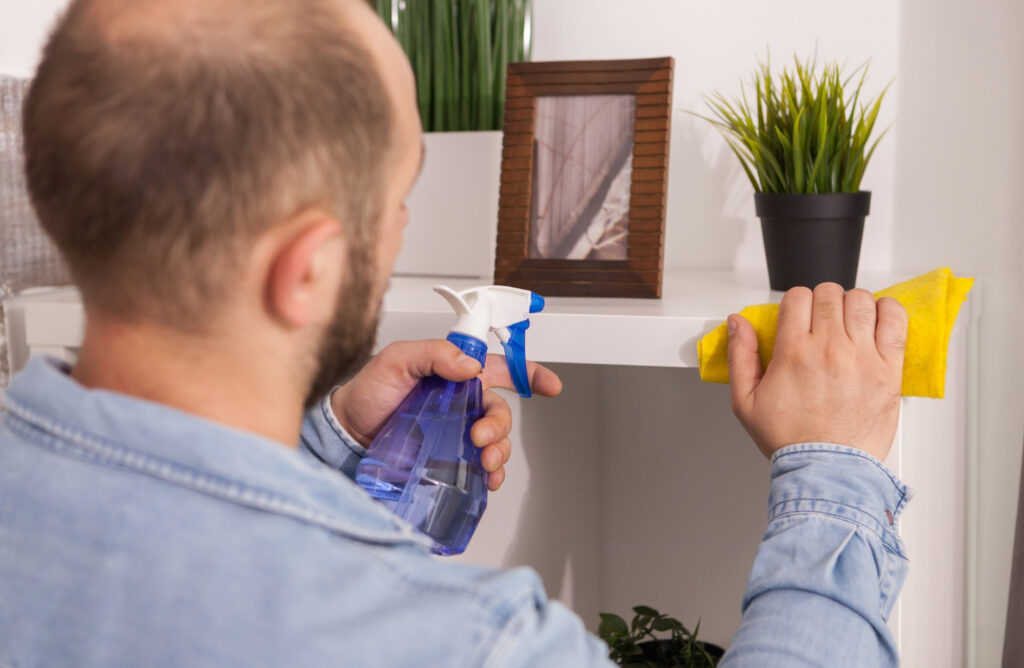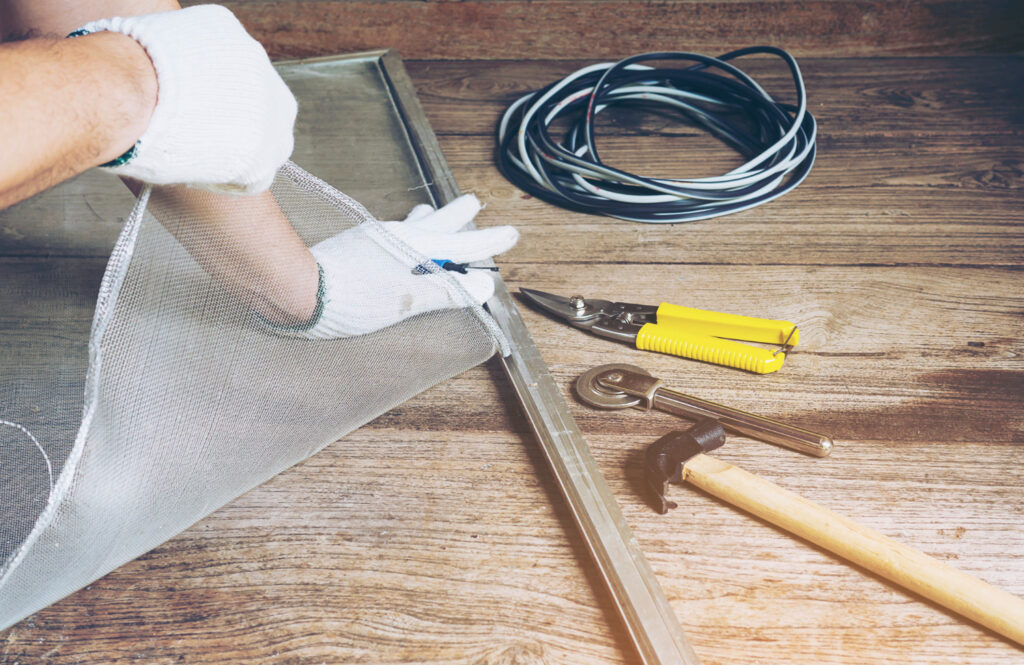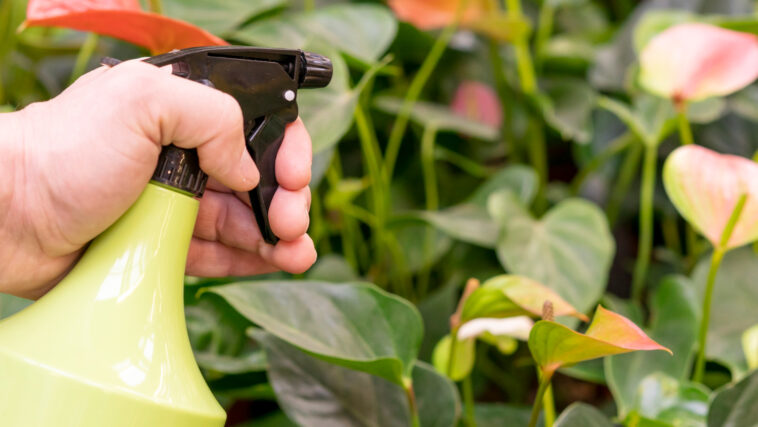Best DIY Pest Control
Dealing with a bug infestation in my own home felt like living out a horror movie. Those tiny invaders didn't just shatter my sense of peace; they threatened my health and the very foundation of my house. I considered calling in the professionals, but the costs held me back.
Instead, I decided to roll up my sleeves and dive into the world of DIY pest control products. Through trials, errors, and some triumphant wins, I've gathered a treasure trove of effective techniques. From preventive measures to full-blown bug battles, I'm here to share my personal journey to a pest-free home.
Understanding Common Household Pests
To effectively manage pest issues within your home, it is imperative to have a comprehensive understanding of the common household pests that you may encounter. Recognizing these pests is the initial step in devising successful strategies for their control and eradication. Here is a more detailed description of some of the most prevalent household pests:
Ants
Ants are social insects that often invade households in search of food. They leave behind distinctive trails and construct nests in various locations. Ant infestations tend to peak during warm weather, making them a common summertime nuisance.
Cockroaches
Cockroaches are notorious for their tenacity and adaptability. They are typically drawn to areas with food crumbs, moisture, and dark hiding spots. These pests can quickly multiply if left unchecked and are known carriers of various pathogens.
Spiders
While the majority of spiders found in homes are harmless, some species can be venomous. They are typically found in dark, undisturbed corners of the house, such as basements, attics, and closets. Understanding the types of spiders in your area is crucial for proper identification.
Rodents (Mice and Rats)
Rodents, including mice and rats, are not only a nuisance but also pose health risks. They can transmit diseases and cause extensive damage by gnawing through electrical wires, insulation, and other structural materials. Effective rodent control methods are essential to prevent infestations.
Fleas and Ticks
Fleas and ticks can infiltrate your home through pets or even on clothing. They are responsible for causing discomfort and potential health problems for both humans and animals. Proper pet care and preventive measures can help mitigate the risk of flea and tick infestations.
Bed Bugs
Bed bugs are tiny, blood-feeding insects that have become notorious for their ability to hide in cracks and crevices around beds, furniture, and walls. Their bites can result in itchy welts, and infestations can be challenging to eliminate. Early detection and professional pest control services are often necessary to effectively eradicate bed bugs.
Now that you know what you're up against, let's explore learn how to keep these unwanted guests at bay.
Preventative Measures
Taking proactive measures to prevent pest infestations is a crucial aspect of effective bugs how to get rid. By making your home less appealing to pests, you can significantly reduce the chances of encountering unwelcome intruders. Here are comprehensive preventative measures to consider:
Maintain a Clean Home
Regularly cleaning your home is essential, with particular emphasis on the kitchen, where food crumbs can attract pests. Employ a routine of vacuuming carpets and upholstery, sweeping floors, and wiping down countertops to eliminate any food residue that might entice pests.
Seal Entry Points
Conduct a thorough inspection of your home to identify gaps, cracks, and openings that pests can exploit to gain access. Utilize caulk to seal cracks in walls, windows, and doors. Additionally, install door sweeps to block gaps at the bottom of doors, effectively fortifying your home against unwanted invaders.
Proper Food Storage
Prevent ants, roaches, and rodents from accessing your food by storing it in airtight containers. Remember to secure pet food in the same manner to thwart pest attraction.
Eliminate Standing Water
Pests are irresistibly drawn to moisture. Address this issue by promptly fixing any leaks in your home and emptying containers that collect water, such as buckets and flower pots. Ensure that your home's foundation has proper drainage to prevent water accumulation.
Trim Vegetation
To thwart pests from using trees and bushes as bridges to infiltrate your home, maintain them by regular trimming, ensuring they remain at a safe distance from your house.
Regular Inspection and Decluttering
Implement a regimen of regular inspections to identify and address potential pest issues at an early stage. Simultaneously, decluttering your home is essential as it reduces hiding spots for pests, making them easier to detect and control.

Natural DIY Pest Control Methods
For those seeking eco-friendly and non-toxic alternatives to conventional pest control, there are several natural DIY methods worth considering. These approaches are effective against a range of pests and can be employed with ease. Here's a more detailed look at these natural pest control methods:
- Diatomaceous Earth: Diatomaceous earth is a natural, finely powdered substance derived from fossilized aquatic organisms. It is remarkably effective against a variety of pests, including ants, cockroaches, and bed bugs. To use it, simply sprinkle diatomaceous earth in problem areas and along entry points where pests are likely to travel. The powder works by absorbing the waxy outer layer of insects, eventually dehydrating and killing them.
- Essential Oils: Certain essential oils, such as peppermint, lavender, and eucalyptus, have properties that can deter pests. To create a natural pest barrier, mix a few drops of your chosen essential oil with water in a spray bottle and apply it to areas where pests are a concern. The pleasant aroma of these oils acts as a repellent for various insects.
- Citrus Peels: Citrus peels from fruits like oranges and lemons can effectively repel ants. Place these peels near entry points or in areas prone to ant infestations. The natural oils found in citrus peels serve as a deterrent to these persistent insects.
- Vinegar: A solution of vinegar and water can help deter ants from invading your home. Mix equal parts of vinegar and water and use it to spray countertops and areas where ants are frequently seen. The strong odor of vinegar disrupts the ant's scent trail, discouraging them from further exploration.
- Boric Acid: Boric acid is a versatile and natural substance that can be effective against both cockroaches and ants. You can use it as a dry powder, applying it to areas where pests are active. Alternatively, create a bait by mixing boric acid with sugar, which attracts the pests. When ingested, boric acid proves lethal to these insects.
- Sticky Traps: Sticky traps are non-toxic and can be used to capture a variety of crawling insects, including spiders and flies. Place these traps in areas where pests are prevalent. Once the pests come into contact with the adhesive surface, they become trapped, providing an efficient and chemical-free method of control.
Chemical DIY Pest Control Methods
In situations where pest infestations are particularly severe, chemical methods may become a necessary recourse. It is imperative to approach chemical pest control with care, adhering to safety guidelines and utilizing appropriate protective gear. Below are some chemical options to consider, along with additional information for their safe and effective application:
- Insecticides: Insecticides come in various forms, including sprays, powders, and baits, designed to target specific pests. To maximize safety and efficacy, it is crucial to thoroughly read and follow the instructions provided on the product labels. Ensure that you apply the insecticide precisely as directed, taking care to focus on problem areas and entry points. Keep in mind that different pests may require different types of insecticides, so proper identification of the pest is essential for choosing the right product.
- Rodenticides: Rodenticides are formulated to eradicate mice and rats. When using rodenticides, exercise extreme caution, especially if you have pets or young children in your home. These products can be toxic to animals and humans if ingested. Follow the recommended safety precautions meticulously, such as placing bait stations in secure, inaccessible locations where non-target species cannot access them. Additionally, regularly inspect and replenish bait stations as needed.
- Bug Bombs (Foggers): Bug bombs, or foggers, release a fog of insecticide to treat a large area within your home. Before employing this method, it is crucial to take stringent safety measures. Ensure that all people and pets are safely evacuated from the treated area during the fogging process, as inhaling the released chemicals can be harmful. Carefully follow the manufacturer's guidelines regarding the number of foggers needed for your space, as well as the duration and ventilation recommendations. After treatment, thoroughly clean and ventilate the area before returning.
- Pesticide Baits: Pesticide baits are designed to attract pests, such as ants and cockroaches, with a toxic substance they consume and then carry back to their colonies. Ensure that baits are placed in areas frequented by the target pests but are inaccessible to children and pets. Follow the manufacturer's instructions regarding bait placement and replacement schedules.
- Residual Sprays: Residual sprays are designed to leave a long-lasting chemical barrier on surfaces, deterring pests from crossing treated areas. These sprays are effective against a wide range of crawling insects, including spiders and scorpions. When applying residual sprays, focus on areas where pests are likely to travel, such as baseboards, cracks, and crevices. Be sure to use protective gear like gloves and a mask, and keep the area well-ventilated during and after application.
- Repellents: Repellent sprays or devices emit a scent or sound that deters pests from entering specific areas. Ultrasonic pest repellers, for example, emit high-frequency sound waves that are bothersome to rodents and insects. When using repellents, follow the product instructions and be aware that their effectiveness can vary based on the pest and the specific repellent used.

When to Call a Professional
While do-it-yourself (DIY) pest control methods can be effective for many situations, there are specific scenarios where seeking professional assistance becomes not only prudent but essential. Here is a more detailed exploration of situations in which it is advisable to engage the services of a professional pest control provider:
Severe Infestations
When faced with an extensive or severe infestation, especially involving dangerous pests like termites, wasps, or venomous spiders, professional pest control services are well-equipped to handle these challenging situations. These experts possess the knowledge, tools, and experience to effectively eradicate and manage infestations that may be beyond the scope of DIY methods.
Health Risks
If anyone in your household has severe allergies, respiratory issues, or underlying health conditions that could be exacerbated by exposure to pesticides or pest bites, it is safer to opt for professional pest control. Pest control professionals are trained to minimize health risks while addressing infestations.
Persistent Infestations
When your DIY pest control efforts have proven unsuccessful, it's a clear indication that the infestation is persistent and may require more advanced techniques and treatments. Pest control experts can conduct a thorough assessment, identify the root causes of the infestation, and implement targeted solutions to ensure long-term pest management.
Preventative Measures
Professional pest control services can also be valuable for routine preventative treatments. By scheduling regular inspections and treatments, you can proactively safeguard your home from potential pest infestations. This is particularly beneficial for areas prone to recurring pest issues or for property owners seeking peace of mind.
Complex Pest Identification
In some cases, correctly identifying the specific pest causing the problem can be challenging. Pest control professionals have the expertise to accurately identify pests and tailor their approach accordingly. Using the wrong methods or treatments can exacerbate the issue.
Compliance with Regulations
Some pests, such as certain wildlife species or invasive insects, are subject to local or state regulations governing their control and removal. Pest control professionals are familiar with these regulations and can ensure compliance when addressing such infestations.
Large-Scale Infestations
For infestations that affect multiple areas or structures on your property, professionals can efficiently coordinate and execute comprehensive treatments. This is essential for ensuring that all affected areas are thoroughly addressed.
FAQs on DIY Pest Control
Q1: What are some common household pests I may encounter in my home?
A1: Common household pests include ants, cockroaches, spiders, rodents (mice and rats), fleas, ticks, and bed bugs. Each of these pests has distinct characteristics and habits that require different approaches to control.
Q2: How can I prevent pest infestations in my home?
A2: Preventing pest infestations involves maintaining a clean home, sealing entry points, proper food storage, eliminating standing water, trimming vegetation, regular inspections, and decluttering. These measures make your home less appealing to pests.
Q3: What are some natural DIY pest control methods I can use?
A3: Natural pest control methods include using diatomaceous earth, essential oils, citrus peels, vinegar, boric acid, and sticky traps. These eco-friendly approaches are effective against various pests without the use of harsh chemicals.
Q4: Are chemical DIY pest control methods safe to use at home?
A4: Chemical DIY pest control methods can be safe when used correctly. Always follow the product instructions, wear appropriate protective gear, and ensure proper ventilation. Exercise extra caution when using pesticides if you have pets or children at home.
Q5: When should I call a professional pest control service?
A5: You should consider professional pest control services for severe infestations, health risks (allergies, respiratory issues), persistent infestations, complex pest identification, compliance with regulations, large-scale infestations, or for routine preventative treatments.
Q6: Can I use natural DIY pest control methods alongside chemical methods?
A6: In most cases, it's not recommended to mix natural and chemical methods, as it can lead to unpredictable results or reduced effectiveness. Choose one approach that suits your needs and values best.
Q7: How do I know if my pest control efforts are successful?
A7: Success in pest control is indicated by a noticeable reduction in pest activity, fewer sightings, and no new signs of infestations. Regular monitoring and maintenance of preventive measures are essential to ensure long-term success.
Q8: What should I do if I encounter venomous spiders or dangerous pests in my home?
A8: If you encounter venomous spiders or other dangerous pests, prioritize safety. Evacuate the area, keep a safe distance, and contact a professional pest control service immediately to handle the situation.
Q9: Are there any eco-friendly pest control options for garden pests?
A9: Yes, there are eco-friendly options for garden pests, such as using neem oil, introducing beneficial insects, and practicing crop rotation. These methods can help protect your garden without harming the environment.
Q10: Can DIY pest control methods be used in apartments or rented properties?
A10: Yes, DIY pest control methods can be used in apartments or rented properties, but it's essential to follow any lease agreements and obtain permission from the landlord or property manager. In some cases, professional pest control may be the responsibility of the property owner.
Conclusion
After battling pests in my own home and diving deep into the world of DIY pest control, I've come to realize that knowledge truly is power. I've been on the frontline, armed with both natural and chemical methods, facing those tiny intruders head-on.
Through every trial, from identifying the enemy to finding the best defense, I've learned the importance of being proactive and the value of persistence. While it can be tempting to go straight for the heavy artillery, often simple preventative measures, regular inspections, and understanding the habits of common pests can make all the difference.
But remember, if ever in doubt or facing an overwhelming opponent, there's no shame in calling for professional reinforcements. Here's to our shared journey towards a safe, comfortable, and pest-free living space.
Sources
https://www.epa.gov/safepestcontrol/dos-and-donts-pest-control




